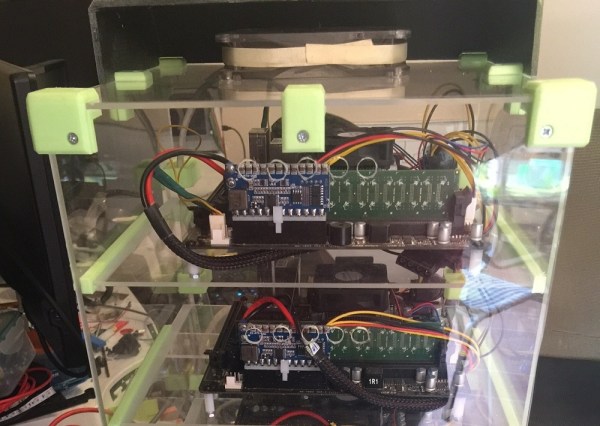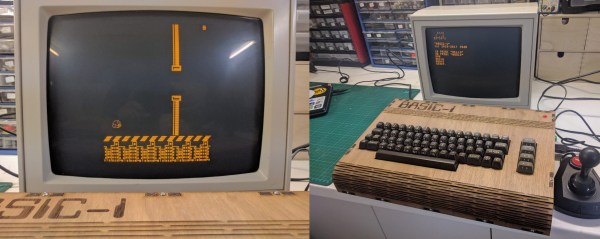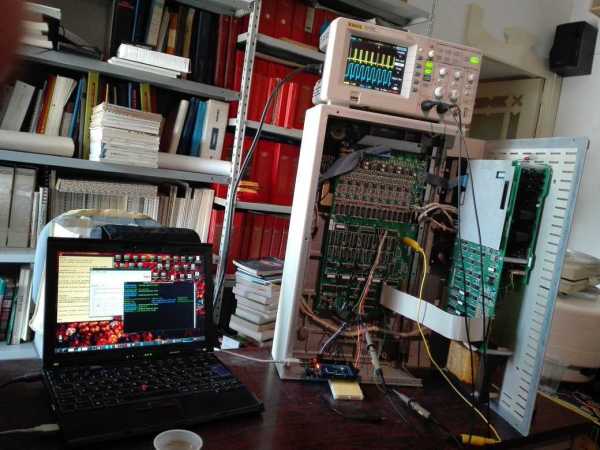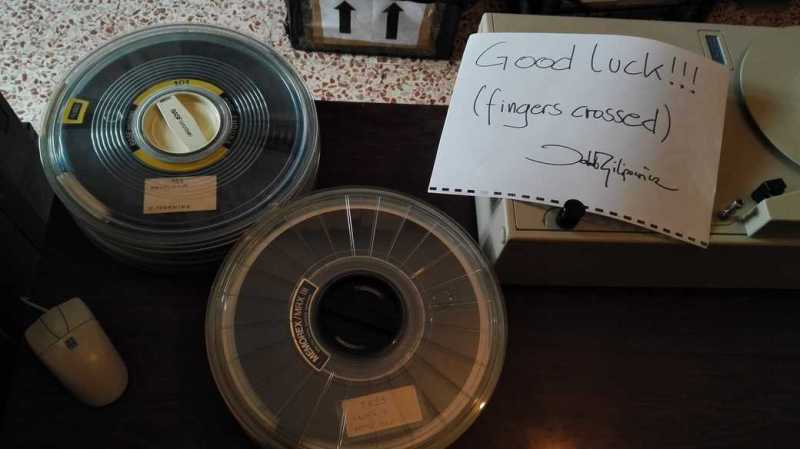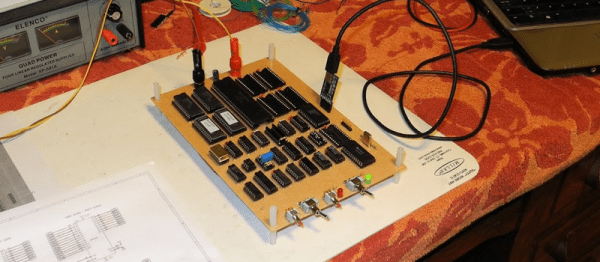[Colin Alston] was able to snag a handful of Mini ITX motherboards for cheap and built a mini super computer he calls TinyJaguar. Named partly after the AMD Sempron 2650 APU, the TinyJaguar boasts four, yes that’s four MSI AM1I Mini-ITX motherboards, each with 4GB of DDR memory.
A Raspberry Pi with custom software manages the cluster, and along with some TTL and relays, controls the power to the four nodes. The mini super computer resides in a custom acrylic case held together by an array of 3D printed parts and fasteners.There’s even a rack-like faceplate near the bottom to host the RPi, an Ethernet switch, an array of status LEDs, and the two buttons.
With 16 total cores of computing power (including GPU), the TinyJaguar is quite capable of doing some pretty cool stuff such as running Jupyter notebook with IPyParallel. [Colin] ran into some issues getting the GPU to behave with PyOpenCL. It took a bit of pain and time, but in the end he was able to get the GPUs up, and wrote a small message passing program to show two of the cores were up and working together.
Be sure to check out [Colin’s] super computer project page, specifically the ten project logs that walk through everything that went into this build. He also posted his code if you want to take a look under the hood.

